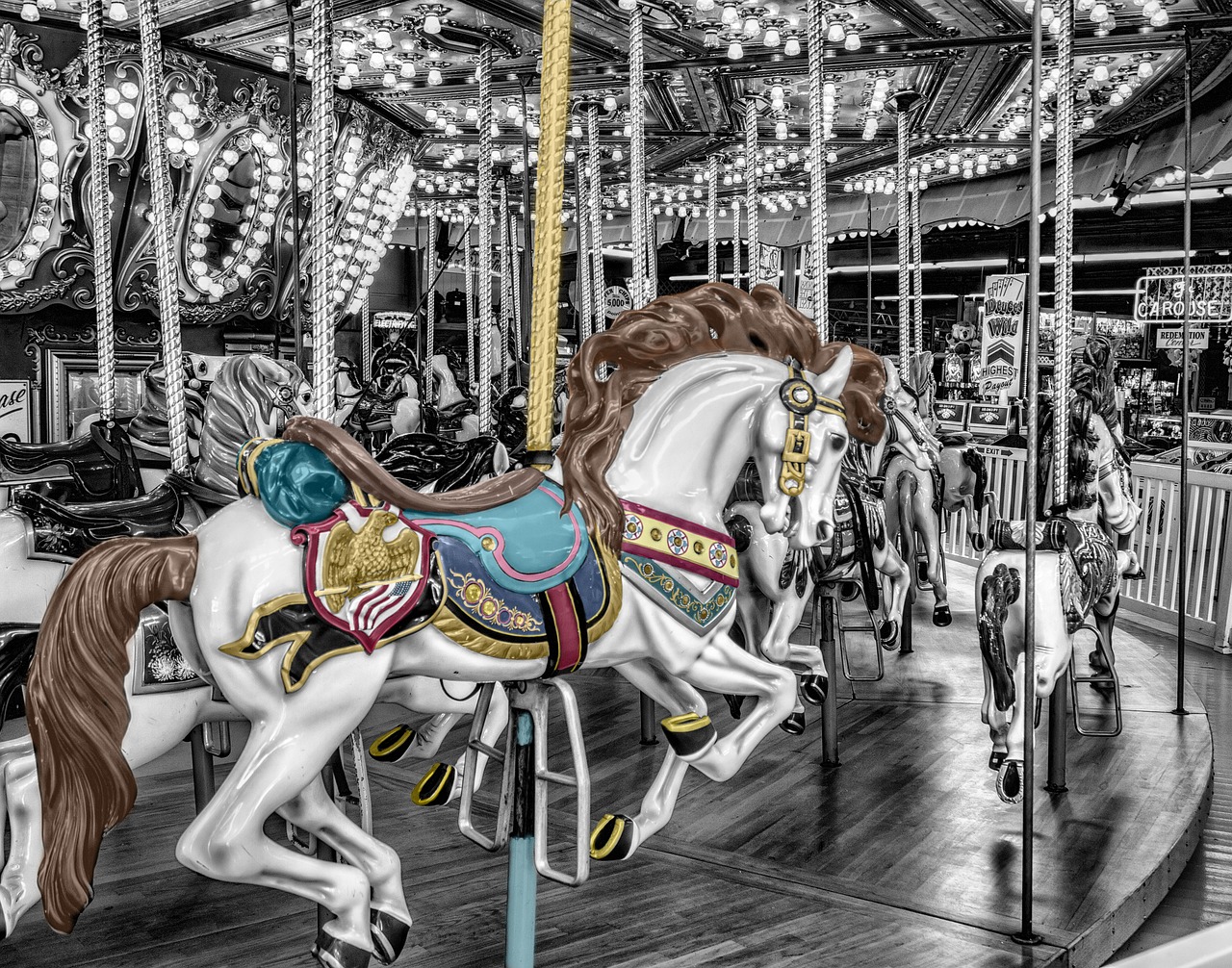Amusement parks have always been close to our hearts — an entrance for many generations into a world of excitement, wonder, and adventure.
From the roller coaster thrills to the family rides, memories are created at these places of amusement that last with all ages.
What started as a neglected fairground composed only of basic attractions has, over time, evolved into something dramatic in the amusement park industry — a shift to thematic worlds as a means to transform the guest experience into something quite magical.
The history can be traced back; however, it was not until the last decades of the 19th century that the modern amusement park began to materialize.
There were pleasure gardens and trolley parks — introductions to this growing form of mass entertainment.
In their beginning stages, these establishments housed relatively simple attractions — picnic areas, dance halls, and basic mechanical rides. Over time, however, the important difference between amusement parks and theme parks has become larger within the industry. Typically, an amusement park can be defined as any place with rides and games; while a theme park conjures cohesive storytelling and immersive settings skillfully spun around particular themes or intellectual properties. This change highlights the increased importance in the industry of creating whole experiences that transport rather than simply providing a collection of rides.
Contemporary parks wisely use technology along with elegant theming and fine operation to create ever more engaging experiences. The fields of virtual reality, augmented reality, and interactive elements have now begun reshaping visitor expectations for contemporary amusements thereby forcing the park to innovate continuously across an entire spectrum of offerings.
The mosaic of amusement parks includes many types aimed at different audiences and experiences. Knowing these types helps visitors pick places that match their likes and hopes. Mega parks are the biggest in the industry, led by fun giants like Disney, Universal, and Six Flags. These big places offer a mix of themed areas, lots of attractions, and many types of entertainment. The Disney parks show this idea well by mixing storytelling with technology and careful design to make real feeling worlds of fantasy. Such parks normally take several days to fully explore; they charge high entrance fees that match the length and quality of services available.
The family and children-focused parks such as LEGOLAND California offer experiences targeted toward families with young children. These parks carefully select attractions at an appropriate level of thrills for children, involve them in activities, and create an environment whose theme stimulates young visitors’ imagination. LEGOLAND presents this integration by including the beloved building blocks in rides, shows, and even accommodations. Everything is put together to make an experience for its young fans.
Waterparks are very important, either as standalone places or nicely placed into bigger amusement parks. South Bay Shores Waterpark at California’s Great America is known for this integrated way; it offers water fun times along with traditional dry rides. These parks give cool breaks in hot weather which makes the place more attractive.
Seaside and classic parks keep the old-time feeling of entertainment places from a long time ago. The Santa Cruz Beach Boardwalk is one of these; it mixes old rides with views of the ocean and has affordable prices. These parks mostly keep very old attractions while carefully taking on new elements to be important for today’s audiences.
Educational and speciality theme parks focus on specific topics or experiences. SeaWorld, for example, blends education about the seas with entertainment, while historically themed parks like Puy du Fou in France authentically evoke different epochs with elaborate shows and settings. Such parks would position their offering somewhere within that spectrum of uniqueness and limited competition with the thrill-centric destinations.
The parks feature a wide array of attractions intended to appeal to a broad range of interests, age groups, and levels of willingness to be thrilled. Therefore, this enormous range ensures that almost everybody who comes will find something at least somewhat appropriate to their comfort level and interest.
Thrill rides are the exciting heart of many parks. Roller coasters have steadily challenged engineering frontiers with ever loftier heights and faster speeds—all new track designs. The modern coaster utilizes a wealth of inversions,
multiple types of launch mechanisms and constantly innovative ride vehicles to provide distinct experiences. In addition to coasters,
drop towers, pendulum rides and high-speed attractions broaden the landscape of thrills—physical sensations—sought by patrons.
The family rides are accessible to all ages and are absolutely necessary for any group visiting together. Carousels, Ferris wheels, and trains provide relatively tame thrills in a context that is very much fun. These rides typically take on significance beyond the mere function of providing entertainment, often becoming meeting places and offering welcome moments of rest between more intense escapades.
Rides and play areas for children are developed only for the younger patrons. They present adult attractions in a smaller scale and sometimes include interactive play spaces. It is in these areas where IPs and beloved characters increase their attractiveness. Height restrictions as well as other safety measures are implemented to ensure that there will be safe excitement for children growing up as well as ensuring their safety.
Live shows and entertainment have dramatically increased in modern parks’ portfolios since they do not depend on roller coasters alone to make money. Theatres capable of Broadway-caliber productions, character meetings, seasonal extravaganzas all add to perceived value by providing alternatives to rides. Many parks have nighttime shows featuring fireworks, projection mapping, drones, and other special effects as signature experiences that justify long visits during the day.
In addition to that, special events and seasonal programming give the parks an opportunity to keep visitors coming throughout the year. Even then, Halloween celebrations have grown very important for the industry; elaborate haunted houses and themed experiences draw large attendance in off-peak times. Holiday overlays plus culinary festivals and concert series add much more general public appeal beyond standard operations.
In California these are some of the most prestigious amusement parks in America-The Bay Area has quite a lot of different offerings when it comes to entertainment. These parks show different approaches to the amusement experience-from old-fashioned attractions to state-of-the-art thrills.
California’s Great America is located in Santa Clara-this is a complete park experience with an assortment of thrill rides-family attractions-seasonal events. The addition of South Bay Shores Waterpark brings more value for guests, especially in the warm months. Great America skillfully mixes old-school fun parts with new things to keep its charm in the tough California market.
Santa Cruz Beach Boardwalk is one of America’s classic seaside amusement parks since 1907. Its Giant Dipper wooden roller coaster stands strong as a popular ride, while the vibrant beachside setting, arcade games, and classic attractions like the Looff Carousel continue to draw crowds of all ages. With free admission and a lively atmosphere, the Boardwalk blends nostalgia with coastal energy, making it a beloved destination for both locals and visitors exploring the Central Coast.

